NATURALLY VENTILATED EARTH TIMBER CONSTRUCTIONS

Research results from [H]house project
ZRS monitoring data and best practice example
Eike Roswag-Klinge - Roswag Architekten


Research results from [H]house project
ZRS monitoring data and best practice example
Eike Roswag-Klinge - Roswag Architekten
Healthier life for Eco-Innovative Components for housing Construction
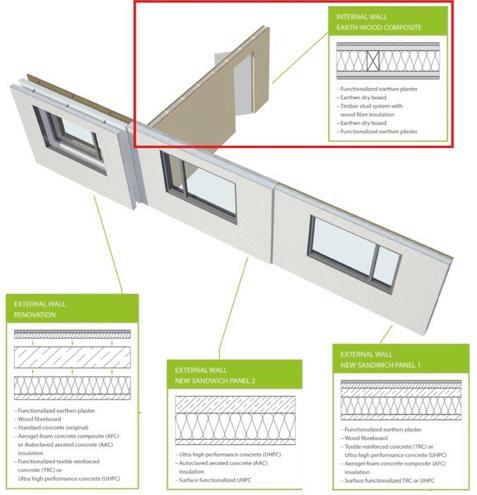
• Innovative materials and construction
• Improved Indoor Environmental
Quality
-Thermal comfort
- RH – Water vapour sorption
- Prevention against overheating in summer
- Low emitting materials
- Adsorption of air pollutants
- Sound insulation
• LCA / LCC
• Energy efficiency
• Affordability and acoustic


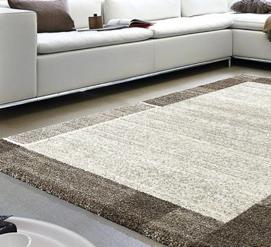

Address shortcomings associated with modern airtight buildings
> increased relative humidity levels indoors, damp problems and condensation
> higher concentration of air pollutants
Develop robust solutions that are able to react to reduced air exchange rates and address associated problems in combination with natural ventilation.


Scofield - Sterling
Diagram 1985
Relevant interdependencies of microbioms and relative humidity
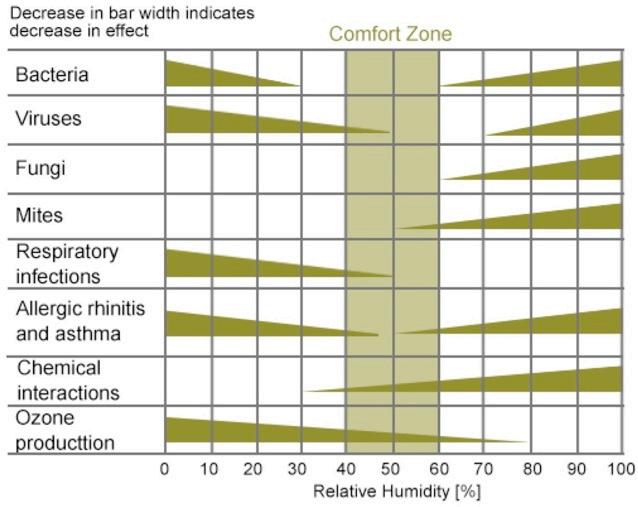
Optimal Zone
Between 40% - 60% RH activity of unwanted health risk for building occupants through bacteria, viruses, fungi etc. is minimal
[H] house – EU RESEARCH PROJECT

Healthier life for Eco-Innovative Components for housing Construction

Comparison : Humidity adsorption of earthen and cementitious plasters

Earthen plaster
Ad-and desorption in 24 h Moisture Sorption [g/m ² ] Moisture Sorption [g/m ² ]
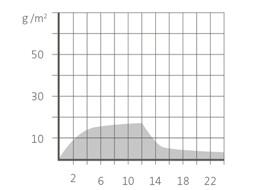



Aerogel (silicate based) highly porous solid objects (ND / CMS / E9)
Bulk density between 40-150 kg/m3, surface area 750 m2 / g
Very cost efficient material production
Material development so far achieved TRL 5, Demonstration is anticipated
Tested against DIN 18947 (earth plasters) strength + shrinkage, new standard required
Flow diameter Drying shrinkage Compressive strength Microscopy
7"%#6&89"+#$%+&:&;)<.$=$<&7"%#6&89"+#$%+&:&>.2$&89"+#$%&
-./0#1#2345#1#26789#:);(;(<# (!#==#
-./0#>#267.9#>#2345?5#@AB3#>##
C4=DAA## :%;(;(>(E<### (!#==#
-./0#1#FG.9#:%;(<##(!#==# -.C###1#FG.9#:%;(<####*#==# -./0# (!#==# H7#999# H7#99# H7#9#
Healthier life for Eco-Innovative Components for housing Construction

Water Vapour Sorption Tests (DIN 18947) + Emission tests (ISO 16000-9 l prEN 16516)
Earth plaster Earth dry, earth cellulose board Wood fibre,wood fibre sandwich board
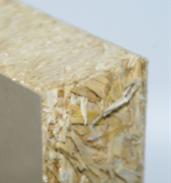
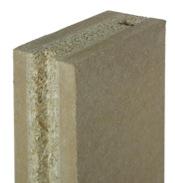

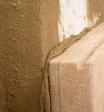


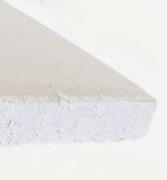

Wood fibre, hemp and clothes insulation
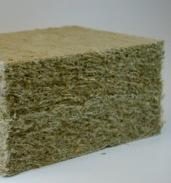
Wood fibre flax board or strawboard
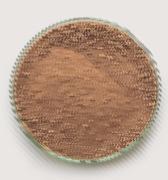
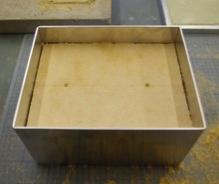

Wall build-ups
Wall build-up: Earth plaster rough (straw) + Earth adhesive + Pavaboard + Pavaflex

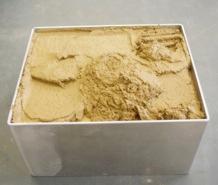

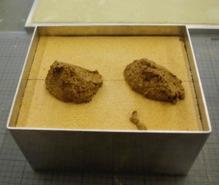

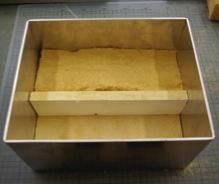
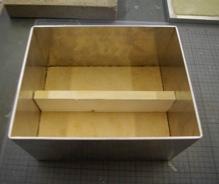

Material investigation – water vapour sorption test (based on DIN 18947)


Material emissions and reduction of airborne pollutants
1. Emissions testing
• Emissions of formaldehyde, VOCs, SVOCs and radon by sampling at days 3, 7, 10 and 28 days after loading
• Evaluation against German AgBB testing scheme
2. Testing for adsorption capacity
• Sorption behaviour towards 5 VOCs representing important indoor air pollutants (1- pentanol, hexanal, butyl acetate, α-pinene and n-decane)
• Concentrations ranging from 200 to 500 µg/m3
3. Testing parameters for both types of testing
• T = 23 °C / RH = 50%
• n = 1.0 h-1 / L = 2.0 m2/m3 → q = 0.5 m3/(m2h)
• Corresponds to a reference room of 30 m3 (3 m x 4 m x 2,5 m) with a wall surface area of 31.4 m2 (European reference room)
Healthier life for Eco-Innovative Components for housing

Material emissions and reduction of airborne pollutants
Preparation of test samples and testing
1. Installation into modular sample intakes
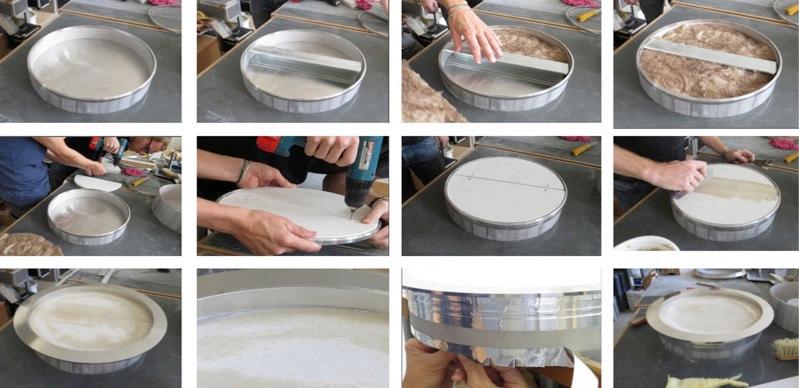

Material emissions and reduction of airborne pollutants
Preparation of test samples and testing

2.Pre-conditioning of test samples, if necessary n = 1,0 h-1, RH = 50 %
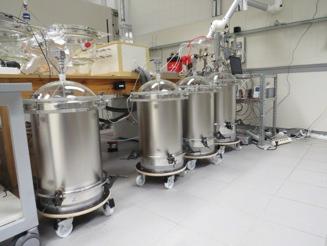
 3. Assembling emission test chamber
1. Glass lid with agitator 3.Hollow cylinder
2. Connection ring
3. Assembling emission test chamber
1. Glass lid with agitator 3.Hollow cylinder
2. Connection ring

Material emissions and reduction of airborne pollutants
Evaluation of (s)VOC emissions

• Evaluation of suitability for indoor use
• In Germany mandatory for flooring materials and decorative wall coverings
• Developed for evaluation of VOC emissions from single building materials
In the H-House project used to assess emissions into indoor air

Material emissions and reduction of airborne pollutants
Evaluation of VOC reduction (ISO 16000-24:2009)
1. Determination of sorption flux Fm [µg/(m2h)]
Mass of VOC (except formaldehyde) sorbed per time per area at the specified elapsed time from the test start
2. Calculation of sorption mass ρAa [µg/m2]
Theoretical maximum mass of VOC (except formaldehyde) that could be removed per area of the sorptive material
3. Test stopped when half-lifetime was reached for each compound
Time elapsed from the start of the test until the VOC decreases to onehalf of the initial concentration.
4. Measurement of re-release of VOCs for at least 7 days

Material emissions and reduction of airborne pollutants
Results of emissions tests
VOC
• TVOC in all cases below 1000 µg/m3
• AgBB criteria fulfilled in 18 from 19 cases
Limitation: Evaluation scheme developed for single materials! For application on composite materials criteria would need to be adjusted.
Radon
Radon exhalation from all tested materials fell below the recommended contribution to the overall indoor radon concentration of 20 Bq/m3 (recommendation German Committee for Radiation Protection)
- In most cases near or below limit of detection

Material emissions and reduction of airborne pollutants
Results of VOC reduction tests (ISO 16000-24:2009)

• Earth plaster materials generally show good adsorption capacity
• Significant increase of adsorption when ND Aerogel powder hydrophilic (NDPI) or CMS Aerogel Granulate hydrophilic (CMSGI) was added
• Adsorption generally favourable to the polar VOCs and n-decane in low amounts;
• α-pinene was not attached
• Plaster thickness important – best performance at 5-10 mm


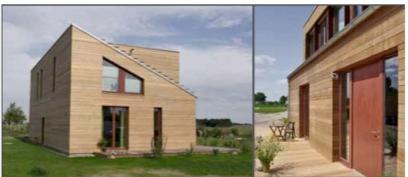
Living and working in the historic “Torfermise” Schechen, Bavaria
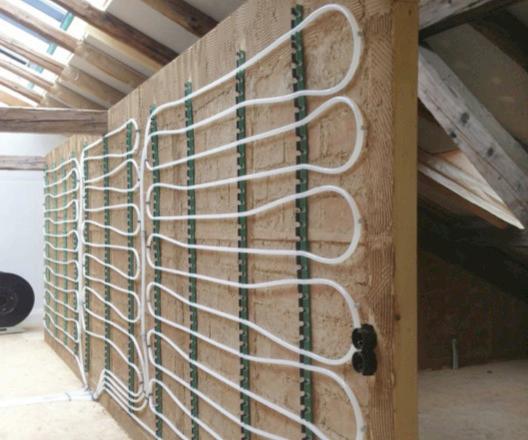


Living and working in the historic




Monitoring results of flats fitted out with earth plasters
Bathroom in wintertime

• Earth, timber, wood- and other natural fibres are vapour active and able control the indoor climate / humidity and temperature
• These natural building materials demonstrate very low emissions and earthen plasters are able to absorb VOC from the indoor air
• The addition of aerogels the moisture adsorption and air purifying capacity of earthen plaster was enhanced fossil society

• Energy efficient, airtight buildings, naturally ventilated twice a day demonstrate healthy RH between 40% - 60%
• In the moderate central climate (Europe) Low-Tech zero carbon buildings can be constructed without or significantly reduced mechanical ventilation • This Low-Tech approach can also be applied for the usually high mechanical ventilated and conditioned office building sector and production buildings
In hot dry climatic zones specially earth has a huge cooling and low-cost potential
Based on further R&D natural materials are based for Low-Tech pioneers of the post
